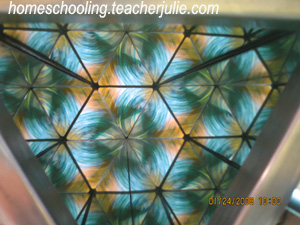June 10, 2008
Preparatory Lessons, Science, Younger Daughter
No Comments
Science Prep
Identification of the different parts of the body (decoding):
- Feet
- Leg
- Nose
- Arm
- Head
- Hand
- Shoulder
- Eye
- Neck
- Ear
- Mouth
Identification of the sense organs:
- Sense of sight
- Sense of smell
- Sense of taste
- Sense of hearing
- Sense of touch
February 29, 2008
Grade 1 Lessons, Science, The Son
No Comments
Warmth from the Sun
The sun warms the land, water and air. Solids absorb heat faster than liquids and gases.
Sun Protection
Too much heat from the sun is harmful. There are different ways to protect you from the Sun’s heat:
- Avoid going out and exposing yourself to the sun for long hours.
- Apply sunscreen before a long sunlight exposure.
- Wear sunglasses to protect your eyes.
- Never look directly at the sun.
- Use an umbrella or wear a wide-brimmed hat
- Wear loose-fitting clothes
- Drink plenty of water and fruit juices during hot days.
February 22, 2008
Grade 1 Lessons, Science, The Son
No Comments
The Sun
The sun is the main source of heat and light of the earth.
It is the center of the Solar System.
The planets and their moons, the meteors and other celestial objects move around the sun.
Sun’s Heat
The sun’s heat can:
- keep all things on Earth warm
- can produce electricity
- living tings need heat to live
- heat helps children grow healthy
- help the plants in food production
- allows us to see objects in the environment
February 15, 2008
Grade 1 Lessons, Science, The Son
No Comments
Care for the Earth
The Earth needs to be cared for.
Biodegradable materials are objects that easily decay like fruit peel and paper. These can be used as compost or fertilizer for the soil and as fuel.
Nonbiodegradable materials are objects that do not easily decay even after a hundred of years. Some of the wastes here can be recycled, processed and/or reused like old bottles made into new glass containers.
To keep the soil fertile, plant seedlings. Plant roots help hold the soil together by preventing the top part of the soil from being washed away. Adding compost, a mixture of decaying matter like fruit peels and decaying leaves is another way to make the soil fertile.
The water and the air are also important in the environment.
Waste pollutes water like rivers and streams.
By not burning waste, especially plastic that is poisonous when inhaled, would help curtail serious health problems.
February 8, 2008
Grade 1 Lessons, Science, The Son
No Comments
Useful Materials from the Earth
The Earth is a rich source of useful materials:
- water
- food
- oxygen
- materials for shelter
- materials for clothing
- crude oil
February 2, 2008
Enrichment, Images, Photo Hunters, Science, The Son, Younger Daughter
5 Comments

Every Saturday, participants post photos based on a theme. The theme for this Saturday is NARROW. Today is February 2, 2008 which is also the birthday of Papa, our grandfather.

A narrow, triangular tunnel with mirrors on all three sides. On one end is a myriad of colors that appear like kaleidoscope when the handle is turned on the end where child can look inside. Wonderful colors it create. The children enjoyed looking at these colors during their Field Trip at the Science Centrum last January 24, 2008.
Please click here to view our other Photo Hunt entries.
 photohunt
photohunt
February 1, 2008
Grade 1 Lessons, Science, The Son
No Comments
Atmosphere
Air is a mixture of gases. Some of the gases are needed by living things to survive. The layers of air that cover the Earth is called atmosphere.
Weather
Weather is the condition of the atmosphere on a given time and place. Weather changes and it affects our daily activities. People should always be prepared for any changes in the weather.


